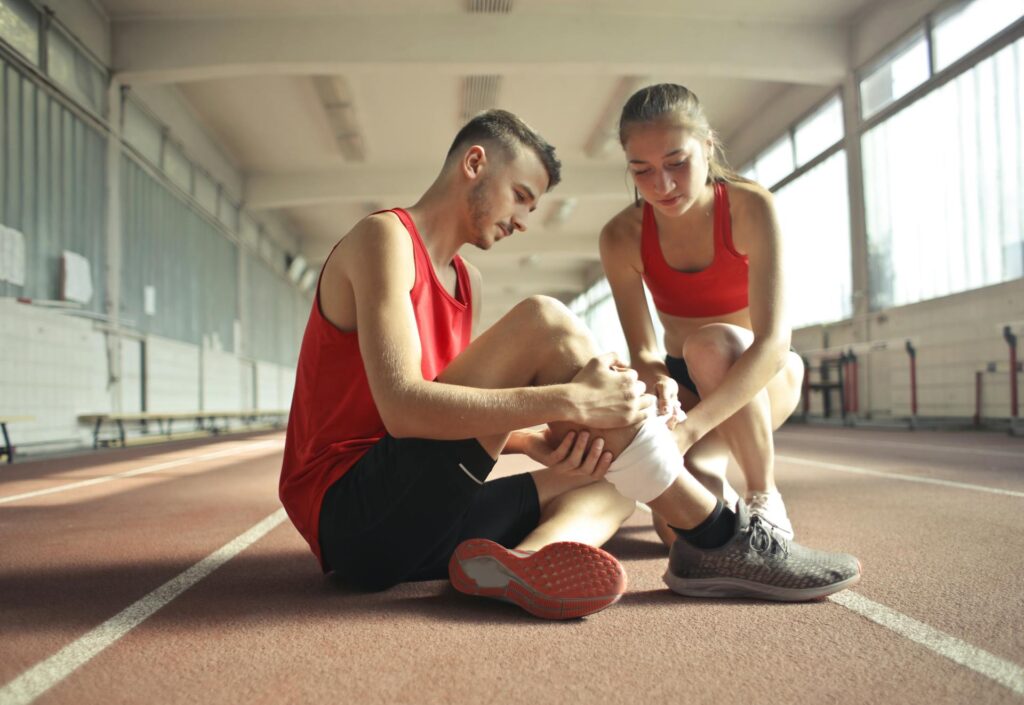Benefits Of Massage Therapy For Muscle Strains And Sprains

The Healing Power of Massage Therapy in Newmarket for Muscle Strains and Sprains
We’ve all been there, lifting something a little too heavy, twisting awkwardly during a workout, or even just sleeping in the wrong position. Suddenly, you’re dealing with a sharp pain, stiffness, or limited movement. Muscle strains and sprains are common, but that doesn’t mean you have to tough it out. Massage therapy in Newmarket offers a natural, effective way to speed up recovery and get you back to feeling your best.
At PhysioChiroWellness, we know that injuries can disrupt your daily life, whether you’re an athlete, a busy parent, or someone who just wants to move without pain. While rest and ice are helpful, therapeutic massage goes beyond temporary relief—it supports healing at the source.
Understanding Muscle Strains vs. Sprains: What’s the Difference?
Before diving into how massage helps, let’s clarify these two common injuries:
- Muscle Strains occur when muscle fibers or tendons (which connect muscles to bones) are overstretched or torn. This often happens from sudden movements, overuse, or poor conditioning.
- Sprains involve ligaments (which connect bones to each other) and typically result from falls, twists, or impacts.
Both can cause pain, swelling, and reduced mobility, but massage therapy targets them differently.
How Massage Therapy in Newmarket Accelerates Healing
1. Increases Blood Flow to Injured Tissues
When you strain a muscle, blood flow to the area decreases, slowing down recovery. Therapeutic massage uses targeted pressure to boost circulation, delivering oxygen and nutrients that help repair damaged tissue.
2. Reduces Inflammation and Swelling
After an injury, inflammation is your body’s way of protecting itself—but too much can delay healing. Techniques like lymphatic drainage massage encourage fluid movement, reducing swelling naturally.
3. Relieves Muscle Tension and Spasms
A strained muscle often tightens up as a protective response, leading to painful spasms. Massage helps relax these contractions, easing stiffness and restoring normal movement.
4. Breaks Down Scar Tissue
As injuries heal, scar tissue forms. While necessary, excessive scar tissue can limit flexibility and cause long-term discomfort. Deep tissue massage helps remodel these fibers, preventing chronic tightness.
5. Improves Range of Motion
After a sprain or strain, joints and muscles often feel stiff. Regular massage keeps tissues pliable, so you regain mobility faster than with rest alone.
The Best Types of Massage for Strains and Sprains
Not all massage techniques are the same. At PhysioChiroWellness, our registered massage therapists (RMTs) customize treatments based on your injury and pain level:
- Swedish Massage – Gentle and ideal for recent injuries, promoting relaxation and circulation.
- Deep Tissue Massage – Targets deeper muscle layers to release chronic tension and scar tissue.
- Sports Massage – Combines stretching and compression to aid athletic recovery.
- Trigger Point Therapy – Focuses on specific “knots” that refer pain to other areas.
When Should You Get a Massage After an Injury?
Timing matters. While massage is beneficial, starting too soon can aggravate acute inflammation. Here’s a general guideline:
- First 48–72 Hours: Rest, ice, compression, and elevation (RICE) are best.
- After the Initial Swelling Subsides: Gentle massage can begin, usually around day 3–5.
- Chronic Pain or Stiffness: Even old injuries benefit from massage to improve tissue quality.
Your RMT will assess your injury and adjust pressure accordingly.
What Research Says About Massage for Injuries
According to the Canadian Physiotherapy Association, massage therapy:
- Reduces pain perception by stimulating the release of endorphins (CPA, 2023).
- Improves flexibility in hamstring strains by 30% compared to rest alone (Health Canada, 2022).
- Lowers muscle soreness post-workout by enhancing blood flow.
These findings show why massage therapy in Newmarket is a trusted part of injury recovery.
FAQs About Massage Therapy for Strains and Sprains
Q: How soon after an injury can I get a massage?
A: Wait 3–5 days for acute injuries, but chronic issues can be treated anytime.
Q: Will massage hurt if my muscle is already sore?
A: It shouldn’t. Your therapist will use appropriate pressure—always communicate your comfort level.
Q: How many sessions will I need?
A: Minor strains may improve in 1–3 sessions; severe injuries could take 6–8.
Q: Can massage prevent future injuries?
A: Yes! Regular sessions keep muscles flexible and less prone to overuse damage.
Don’t Let Pain Slow You Down—Book a Massage Today
Whether you’re recovering from a weekend warrior mishap or a long-term nagging injury, massage therapy in Newmarket at PhysioChiroWellness can help. Our skilled RMTs create personalized treatment plans to reduce pain, restore movement, and prevent re-injury.
Ready to feel better faster? Click here to schedule your massage therapy session today and take the first step toward pain-free living.
